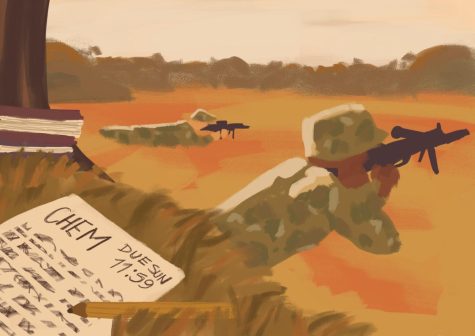UT alerts should include student-centered information
October 12, 2022
The Clery Act requires UT to notify students about reportable offenses, geographic location, and danger level for the campus community and first responders.
Although these factors may be useful for police personnel reporting on a crime, they often aren’t helpful for students unfamiliar with Austin. Clarity is key when reporting crimes to students, and the lack of student-minded detail can result in unnecessary confusion.
Providing clearer incident notification details students will understand, such as saying which campus landmarks are near where crimes occur, would benefit those on campus. Ensuring students know everything they can about local crimes is vital, because otherwise, students can feel unsafe.
Sociology freshman Nanaafiia Adjei expressed her grievances about the lack of clarity with the current alert system.
“Whenever it gets more to specific locations, I can’t really gauge what side of campus it is,” Adjei said. “When you’re talking to students from different backgrounds, they’re not going to know specific locations off the top of their head.”
Stephanie Jacksis, director of communications and strategic marketing for the University of Texas Police Department, declined an interview, but provided details about the current alert systems through existing department web pages. One website is the crime feed, which displays information about on and off-campus crimes.
On the crime feed, there are bullet points concerning what information is conveyed in alerts. For text notifications, messages must be sent with details on “credible, immediate, ongoing threats” to the UT campus. They are said to provide “immediate direction” to faculty and students in the affected areas.
However, in reality, the texts are limited to a certain number of characters before displaying a link from Everbridge, a mass messaging and alert system. These links time out, so a student looking for information would not be able to follow the link from the text after a certain time period. The convoluted nature of the information often results in student confusion.
“How are we supposed to be preventing crimes like this, if not all of the information is being told?” Adjei said.
The on-campus crime notifications should provide known campus landmarks when citing a crime’s geographical location, so students only familiar with campus can accurately pinpoint where crimes occur and can act accordingly.
For notifications pertaining to off-campus incidents, addressing which storefronts are close to the geographical location could be helpful. Many off-campus notifications take place near certain blocks of Guadalupe Street. Many students are more familiar with what businesses occupy the space as opposed to their physical addresses.
If UT reported crimes with a student’s perspective in mind while providing as much information as possible, many students would feel safer. A study, poll or even widespread questionnaire could give UT insight into what students want to know from emergency alerts.
Student safety should be of the utmost importance on campus. With abundant crime concerns, students are voicing what they need from campus alerts. UT can use the student perspective to improve the alert system. It’s just a matter of listening.
Emejulu is a computational engineering freshman from Austin, Texas.












